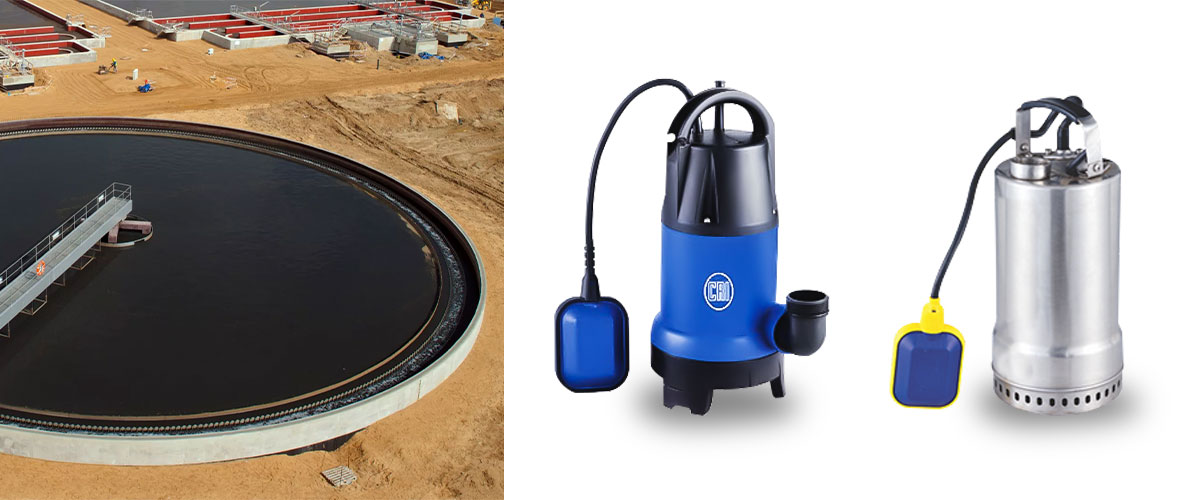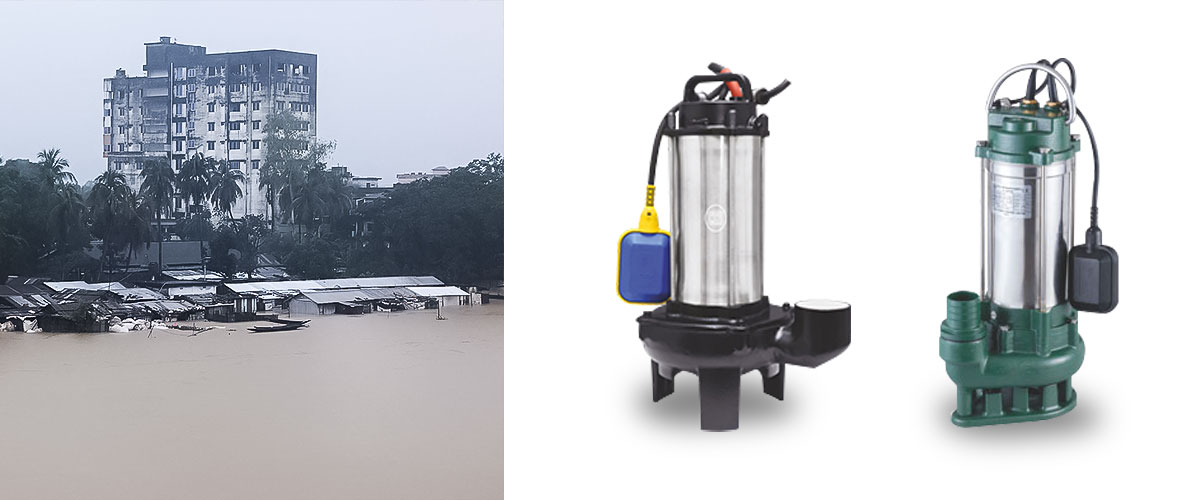
Waste Water Management has become increasingly important with the drastic climate changes and widespread droughts of today. Essentially, wastewater pumps are a type of submersible pump designed to handle wastewater, effluent, and sewage with solids. They can also be implemented for pumping at purification plants, pumping from septic tanks, rainwater pits along roads and construction sites and for pumping grey wastewater in locations such as residences, farms, commercial buildings, and industrial areas.
To treat waste water, submersible sewage pumps and dewatering pumps are used depending upon the water source that requires to be pumped. In this article, let us understand the working principles, application of submersible sewage pumps and how they differ from drainage pumps.
We know there are many types of water in commercial and institutional buildings and the kind of pumps required to handle depends upon the water source.
Blackwater contains fecal matter and bacteria that are harmful. This water is usually flushed from toilets and may contain solids.Submersible sewage pumps are used for such applications.Greywater in buildings is generally wastewater from sinks and showers that does not contain fecal matter It contains much smaller solids if any at all. Stormwater or Rainwater runoff is the water that is not absorbed into the soil. Dewatering pumps can be used to eliminate water in such cases.
Sewage pumps are a type of water pump designed with a solids handling capability. They are non-clog pumps. They use a variety of impellers to reduce clogging. Sewage pumps are used for pumping sewage and effluents from residential and commercial buildings. They are widely used in pumping wastewater or water containing suspended material.

The sewage from most residential applications is pumped from a sewage basin to a sewer system or septic tank, which can contain soft solids up to 2 inches in diameter. Centrifugal pumps used in sewage systems have a unique design that allows solids to pass through without clogging. Because they are usually submersible and situated in the lowest part of the sewage basin, they are also called submersible sewage pumps. When the pump is turned on, the motor starts rotating the impeller, creating a pressure that pushes water into the impeller and into the discharge pipe.
The sewage pump is generally powered by a 10-to-25-foot electric cord. The pump housing, which houses the motor and impeller, is made of corrosion resistant material and is designed for long-term use.

The purpose of sewers is to carry solid waste as well, while drainage is to remove excess water. Drainage can be open to air, but sewage can’t be open to air since harmful gases come out of sewers. What separates sewage pumps from drainage pumps is their ability to handle larger solids. The selection of a pump necessitates looking at the particle size that the pump can handle. If effluents from a septic tank need to be pumped, then a pump that can handle larger particle sizes would be better. Another important criterion is the total head that the pump can handle. As the head increases, the flow lessens.
Centrifugal pumps are most commonly used for pumping sewage, because these pumps can be submerged in the fluid and can handle solid matters.
Sump pumps are essential in many houses or buildings where flooding or water excess is a common problem. Flooding and stagnant water can damage property, materials, and the plumbing system of a building. Sewage pumps are used to remove not just water, but also wastes and other materials.
Dewatering pumps are used in construction and mining to remove groundwater or surface water to lower the water table. By lowering the groundwater level, the workers are safer and the operation is more efficient.
C.R.I. manufactures energy-efficient wastewater submersible & surface dewatering pumps for powerful wastewater pumping applications.CRI’s SL and SLC series are widely used sewage submersible pumps. The commonly used dewatering pump for pumping out flood water is CRIs DL and DLS series.The cutter series from CRI is used in handling waste from food and beverage industry and hospitals.
For all your waste water management solutions, contact us to know more.